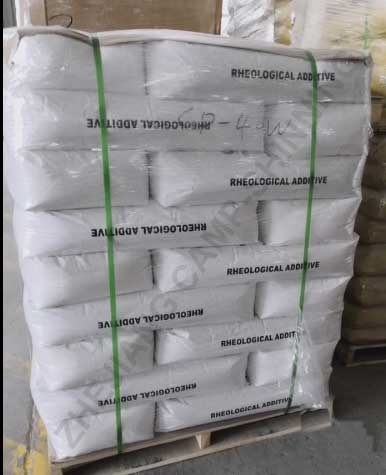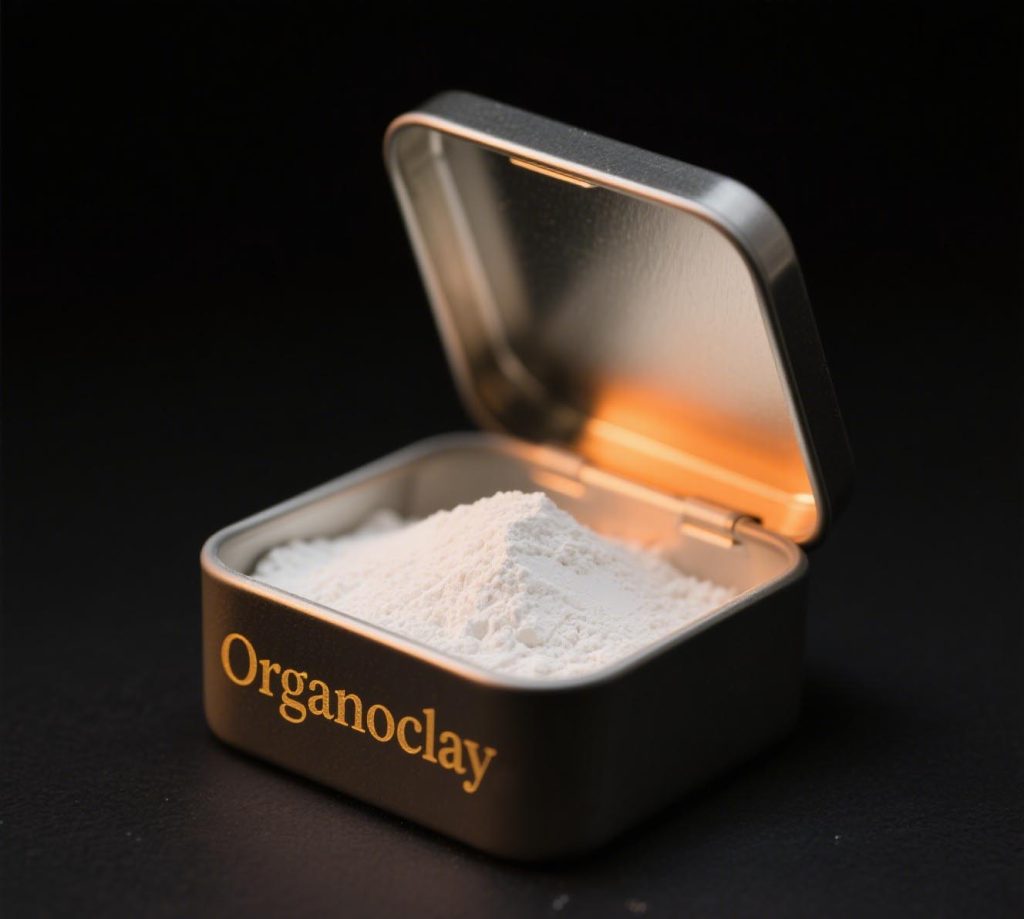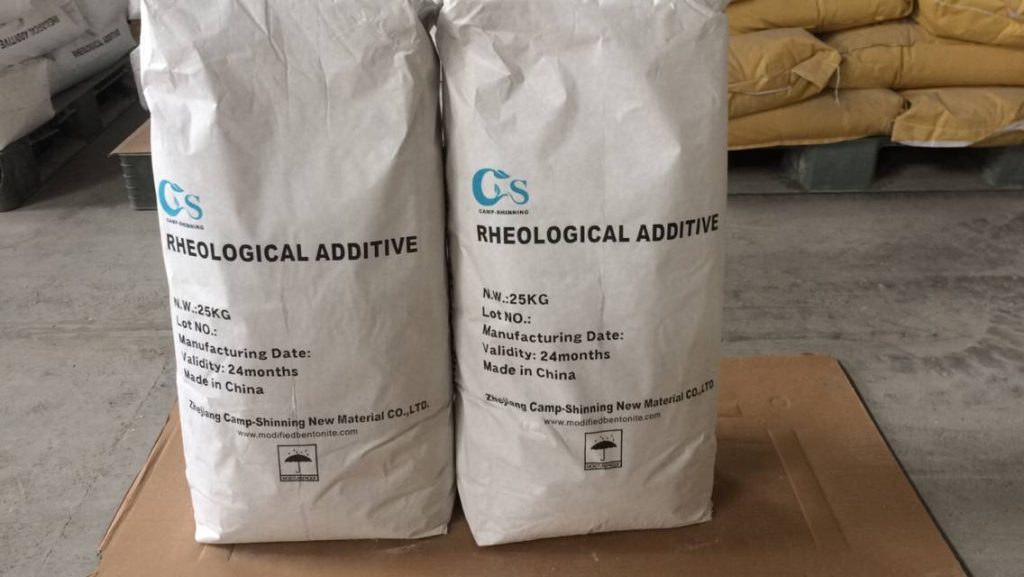Organoclay thixotropic properties are among its key functional characteristics, making it an important additive in the coating field.
Organoclay is produced by replacing exchangeable cations in montmorillonite with organic ammonium cations, which cover the montmorillonite surface, block water adsorption centers, and turn it into a hydrophobic and lipophilic organoclay complex with excellent properties like dispersion, swelling, adsorption, bonding, and thixotropy.
If the purity of the raw clay is insufficient, purification is necessary. For calcium – based bentonite and sodium – based bentonite with low cation exchange capacity, modification is essential to increase the cation exchange capacity. To enhance the interaction between bentonite and organic covering agents, activation pretreatment with inorganic acids or hydrogen ion exchange resins is usually conducted before covering.
The organic covering process involves heating the slurry to 38 – 80℃, slowly adding the organic covering agent under continuous stirring, and stirring for another 30 – 60 minutes for full reaction.
After the reaction, heating and stirring are stopped, and the suspension is washed, filtered, dried, to obtain the organoclay product with desired thixotropic properties.

The CP series of organic bentonite is mainly used in solvent-based and water-based paints, coatings, inks, lubricants, cosmetics, and oilfield drilling fluids.

Rheology modifiers are an organo clay (modified bentonite), designed especially for use in solvent based system. Organic Clay can be used widely in solvents from low polarity to medium-high polarity.
Properties
Composition Organic derivative of a montmorillonite clay
Appearance Fine powder, light yellow
Moisture content (105℃,2hr) ≤3.5%
Loss on ignition (1000℃) 28%-31%
Bulk density 0.53g/cm3
Fineness (<74μm, %) ≥98%
Organoclay thixotropic properties
- High gelling efficiency,high viscosity
- Wide application range, it can be applied in all low, middle and high polarity range
- Produce reproducible thixotropic consistency over a wide temperature range
- Imparts particle suspension, preventing hard settling of pigment and fillers
- Exerts strong film reinforcing action in organic binder systems
Application of Organo clay
Organo clay is used in the following applications:
- Marine paint, Industrial paint, heavy-duty, anticorrosion paint such as bituminous coatings, epoxy paints, chlorinated rubber paints
- Grease
- Inks
Sealant
Using
Organo Bentonite disperses under high shear and requires a polar activator for best efficiency. Heat is not required to obtain good dispersion. Addition levels are typically in 0.2%~2.0%. Polar activator (95% Ethanol or 95% Methanol) is needed. Normally addition level of polar activator is recommended to be 45%~60% of CP-40 in weight. If in xylene system, addition level of polar activator is about 30%-40% of CP-40 in weight.
Pre-gel is made as below procedure.
- Charge solvent to mill
- Slowly add CP-40 (6-10% by weight of total pre-gel) to mill under agitation.
- Mix at high speed for 5 minutes.
- Add polar activator.
- Mix at high speed for 5 minutes.
Package
Kraft bag or kraft complex interior with PE or customized
Storage
Organic bentonite clay has a shelf life of 2 years, and should be stored in a ventilated, cool and dry place.
Safety
All safety information is provided in the Material Safety Data Sheets for Zhejiang Camp-Shinning New Material Co.,Ltd..
Email: [email protected]
Whatsapp : 0086-13185071071

